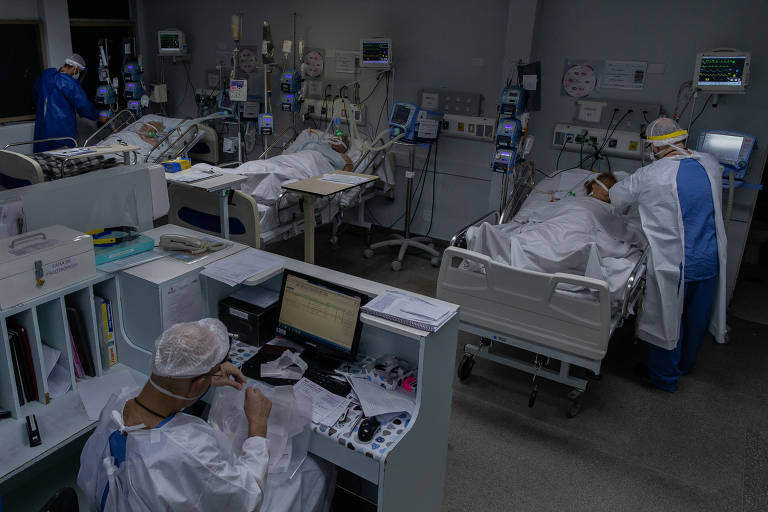As life begins to return to normal in the central neighborhoods of São Paulo, the pandemic of the novel coronavirus has left deep marks on the outskirts of the city.
At the Tide Setúbal municipal hospital, in São Miguel Paulista, east of São Paulo, mortality in the ICU for Covid-19 patients is 90%, following the calculation by the National Health Agency, which takes into account the number of deaths divided by the number of deaths, discharges, and transfers added.
According to epidemiological data from the hospital, there have been 237 deaths in the ICUs reserved for those infected with Covid-19 and only 23 discharges since March 16. When only the cases confirmed with the PCR exam, used to detect whether the patient has the disease, were recorded, there were 166 deaths in the ICUs and nine discharges.
In comparison, at Hospital Emílio Ribas, which is also public, but has more resources and is located in an affluent area of the city, the mortality rate is 27.4% in its ICU beds reserved for Covid-19.
According to a survey carried out by Carlos de Carvalho, professor of pulmonology at the USP School of Medicine, the average mortality rate for Covid-19 in the ICUs of 16 state hospitals in São Paulo is 46%.
In a note, the director of Tide Setúbal, Carlos Alberto Velucci, stated that, from March 16 to July 31, 1,036 patients were admitted to the hospital, both in sick and ICU beds, with 613 testing positive for Covid-19. According to him, the hospital recorded 361 deaths in this period, 246 of which were patients with Covid-19.
Altogether, says Velucci, 619 increases were registered. The direction of the Unit states that the mortality rate (total, not just in the ICU) is around 63%.
According to Velucci, the high mortality is due, in part, to the fact that patients reach a very advanced stage of the disease in peripheral hospitals. "The hospital operates with doors open for 24 hours and receives, in its majority, patients in an advanced stage of the disease, including from other municipalities", the note said.
Translated by Kiratiana Freelon
